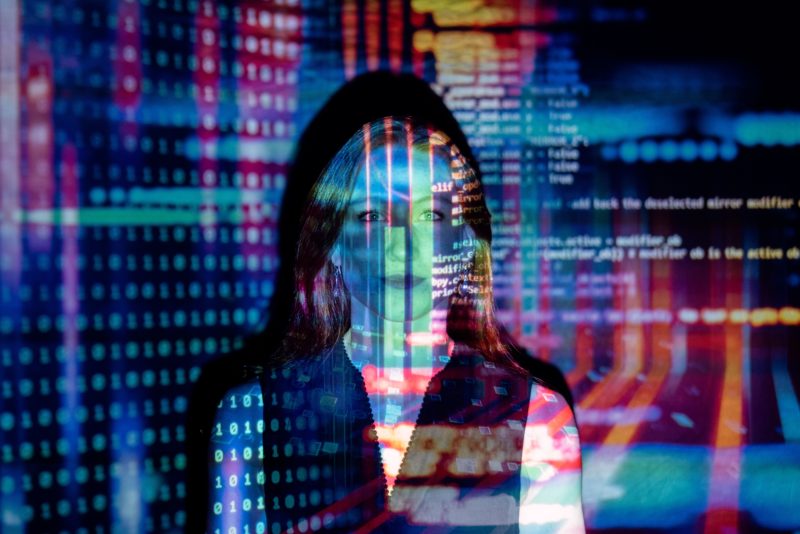This article is part of a three-part series on NFTs:
- Part 1: What are NFTs and Where Do They Derive their Value?
- Part 2: NFTs and IP Law
- Part 3: NFTs and the Digital Art Marketplace
In the first and second parts of our series on NFTs,[1] we discussed where NFTs derive their value and what this new breed of digital tokenization means for IP-rights creators, holders, and users.
In this third and final instalment, we look at the history of NFTs from an artistic perspective and what their emergence means for the world of digital art.
NFTs and the Digital Art Marketplace
You’ll recall that the purchaser of an NFT does not purchase the underlying artwork itself, but a digital reference to that work. Therefore, from an artist’s or curator’s perspective, the terms “NFT gallery” or “NFT exhibition” are somewhat of a misnomer. In fact, there is no way of exhibiting an NFT per se (unless what is displayed is a file that contains lines of code). That being said, artists have begun using NFTs as a means of creating and reflecting on their work.[2] Whether these artists are branching off into a new field of digital art called “NFT Art,” or continuing the decades-long tradition of “Net Art,” is a topic better left for digital art historians and critics.
There is, however, an artistic impetus that has lead to the current appetite for NFTs. And surely one day, art historians will write about “NFT Art” and the enthusiasm that ensued in the contemporary art world.
Some say that NFTs emerged from a certain type of Bitcoin called Colored Coins (first seen in 2012).[3] Colored Coins were specific denominations of the cryptocurrency that, like their name suggests, bore specific colours. These coins arguably laid the groundwork for NFTs. Indeed, because of their specificity, they could be used to represent other assets, much like NFTs. Unlike NFTs, though, they could only represent certain values if there was consensus as to their worth. What’s more, the Bitcoin blockchain scripting language simply could not enable this type of one-to-one trading within its network. Despite these technical constraints, the potential for putting real-world assets onto a distributed ledger became apparent with Colored Coins. Actual implementation would require a more malleable blockchain – which is where Ethereum’s subsequent launch would become relevant, largely due to the nature of smart contracts enabled by the Ethereum network.
In parallel and seemingly unconnected to Colored Coins, in 2014 Kevin McCoy and Anil Dash created “Monetized Graphics.”[4] McCoy and Dash were paired in the annual Rhizome Seven-on-Seven art hackathon. There, they teamed up to think of ways artists could support and protect their creations via the blockchain. They hacked a prototype of a blockchain-backed means of asserting ownership over an original digital artwork. However, knowing they could not fit a whole file on the blockchain, and simply because they were running out of time owing to the time constraints of the hackathon, they used a web address to reference the underlying artworks they were seeking to protect. Ironically, NFTs still rely on that very same shortcut seven years later.
Aside from the above, the potential for linking “real-world” assets to the blockchain has manifested over the years in projects like Counterparty (2014),[5] Rare Pepes (2016),[6] CryptoPunks (2017),[7] and CryptoKitties (2017).[8] These projects expanded on the idea of the decentralized buying and selling of digital assets – at first on the Bitcoin blockchain, then migrating to the Ethereum blockchain.
One of the more innovative of these projects is CryptoPunks, an NFT project started by two Canadian technologists under the name Larva Labs. In 2017, Matt Hall and John Watkinson released 10,000 digital CryptoPunk images on the Ethereum blockchain. Each CryptoPunk is 24 x 24 pixels in size with randomly-generated features, making each one of them entirely unique. And, because only 10,000 were (and will ever be) released, they are also quite rare. All 10,000 CryptoPunks were initially released for free and swiftly claimed; some now sell for tens of millions of dollars. Aside from their high price tag, what is particularly interesting about CryptoPunks is that they can be stored on the blockchain due to their small size. This helps fuel their worth and, by extension, the community of collectors supporting them.
Above and beyond any discrete moments in the history of NFTs, what is particularly important from an art historical perspective, is what NFTs potentially mean for the conservation of digital art. For those working in that space, maintaining works of digital art has always been a challenge. Files corrupt, weblinks break, and code fails. And, unless an institution is properly equipped with the tools and know-how to care for works of digital art, the works may become inaccessible over time. NFTs offer a new possibility for the preservation of digital art, where a community of NFT collectors could act as a sort of caretaker of the underlying works of art. With NFTs, digital art can live in its native form “on” the blockchain and be conserved as such. This is a relatively new phenomenon in the history of digital art and one which art institutions may seek to capitalize on in the not so distant future.
Conclusion
We are only now beginning to see how NFTs will evolve over time. Many were skeptical at first, but are coming around to the idea that NFTs are here to stay – and perhaps, refashion the art market (and other digital collectible markets).
In any event, before blockchain technology generally, and NFTs specifically, receive any kind of large-scale legal application, there are certain hurdles to overcome, not least of which is that intellectual property law is jurisdictional, whereas the blockchain is not. That being said, from an IP angle, distributed ledger technology offers obvious possibilities when it comes to IP protection and registration. As seen in parts 1 and 2 of this series, NFTs can be used as evidence of creatorship and for authentication purposes, but also for tracking the distribution of registered and unregistered IP rights and facilitating royalty payments in real-time. On a larger scale, consensus-based blockchain technology could also be used to validate certain IP rights and, by extension, detect IP infringement.
In sum, the technology is still evolving. And, as it evolves, more and more industry stakeholders – developers, artists, legal practitioners – will work to develop interoperability standards and protocols. The technology will continue to build from there, as will the community around it.
Learn more about our IP practice.
[1] See https://ip.fasken.com/nfts-intellectual-property-and-art-an-overview-in-three-parts & NFTs and Intellectual Property: An Overview in Three Parts (Part two of three) (fasken.com)
[2] See for example, the work of Sarah Meyohas’ BitchCoin (https://sarahmeyohas.com/bitchcoin/) and Refik Anadol’s Unsupervised (https://feralfile.com/exhibitions/unsupervised-sla).
[3] https://yoniassia.com/coloredbitcoin/
[4] https://rhizome.org/editorial/2014/may/03/seven-on-seven-2014/
[7] https://www.larvalabs.com/cryptopunks
[8] https://www.cryptokitties.co/



